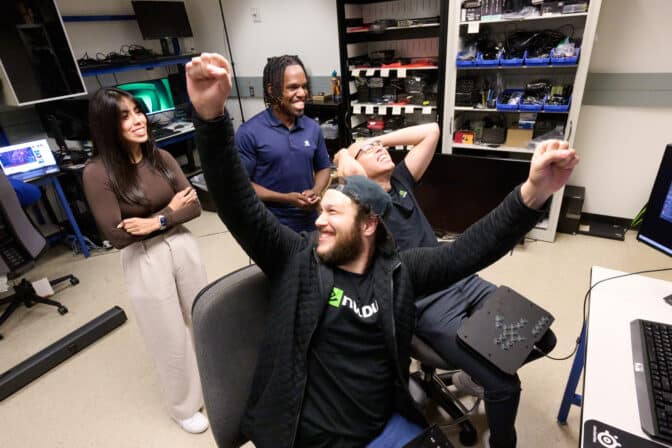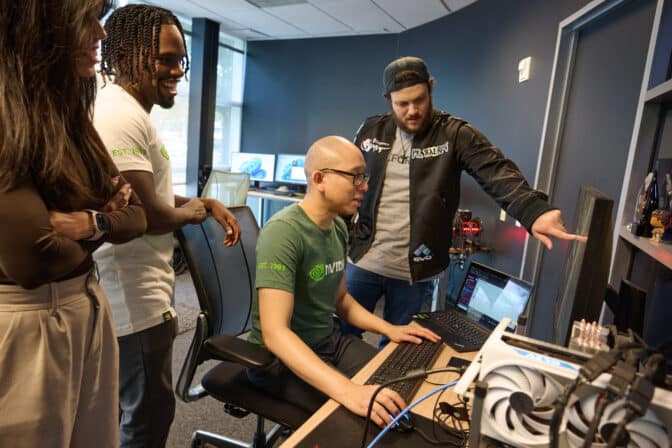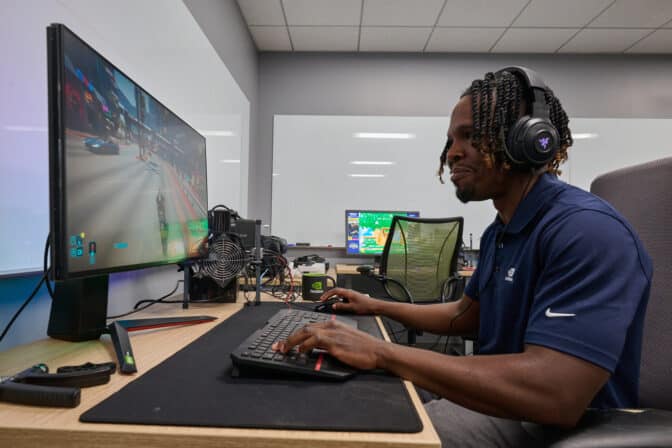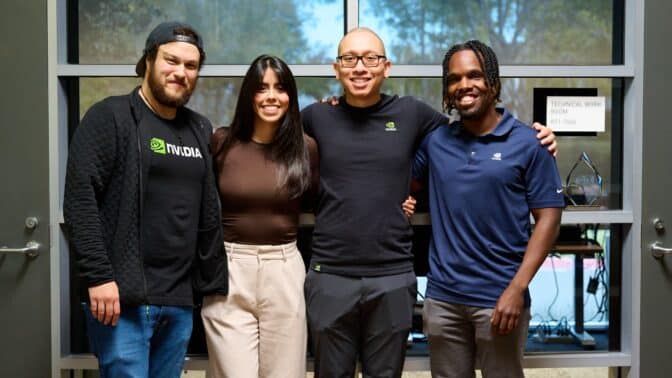For some NVIDIANs, it’s always game day.
Our Santa Clara-based software quality assurance team boasts some of the world’s top gamers, whose search for bugs and errors is as strategic as their battle plans for toppling top-tier opponents in video games.
Two team members of the QA team — friendly colleagues in the office but fierce rivals in the esports arena — recently competed against one another at the finals of the Guildhouse Fighters tournament, a local circuit in Northern California.
Eduardo “PR Balrog” Perez-Frangie, a veteran Street Fighter player, fought his way to the Grand Final to face Miky “Samurai” Chea.
Perez-Frangie came out on top, but there was a twist: he’d brought to the contest his two-year-old son, who fell asleep on his father’s chest mid-match. “I played the rest of the game with a deadweight in my lap,” he said.

A Competitive Spirit
Perez-Frangie has competed for 15 years in a series of fighting game titles, including Marvel vs. Capcom, Killer Instinct and Mortal Kombat. He was part of the Evil Geniuses esports organization when he joined NVIDIA almost a decade ago but now plays without a sponsor so he can enjoy more family time.
He’s played against Chea in esports events for years, and they’re just as competitive in the office as in the stadiums.
“Even when we’re in the test environment, when we’re looking for bugs, we are competitive,” Perez-Frangie said. “But Miky stays calm — he was a teacher, so he can put everyone in their place.”
Chea’s days teaching kindergarten through eighth grade in Fresno, California, are behind him, but the coaching aspect of his current gaming-related role reminds him of the classroom — a place to share insights and takeaways.
As new games are released and older ones updated, “the hardware and software stack needs to work in harmony,” Chea said. “Our pro gaming team is the last line of defense to ensure our customers have the best gaming experience possible.”

QA team member DaJuan “Shroomed” McDaniel is a top-ranked Super Smash Bros. Melee player whose signature characters are Sheik and Marth. He’s also widely considered to be the best Dr. Mario player of all time.
“Being a competitive gamer, visual fidelity is so important,” McDaniel said. “We can see and feel visual anomalies, frame discrepancies, general latency and anything that’s off in ways that others won’t see.”

A Winning Formula
Alyssa Ruiz joined the QA team a year ago, initially testing drivers as part of the pro gaming team before switching to testing NVIDIA DLSS, a suite of neural rendering techniques that use deep learning to improve image quality and performance.
Introduced to gaming by her brothers through Halo 3, she later dedicated hours to Fortnite before deciding to stream the gameplay directly from her console. She posted the content to TikTok and began playing in online tournaments. By then, her game of choice was Riot Games’ Valorant.
“The game has a large female player base with visually appealing graphics and an engrossing storyline,” she said. “It can be more complex than a fighting game because it relies on a combination of abilities with strategies. It’s also a team game, so if someone isn’t pulling their weight, it’s a loss for all of us.”
That’s not unlike the team dynamic in the office.

Each member brings their own specialties to the testing environment, where they’re using their keen eyes to scrutinize DLSS technologies.
Their acute awareness of game latency and image fidelity — honed through hundreds of hours of gameplay — means the team can achieve better test coverage all around.
“We’re all very competitive, but there’s a real diversity that contributes to a stronger team,” Ruiz said. “And we all get along really well.”
Learn more about NVIDIA life, culture and careers.
